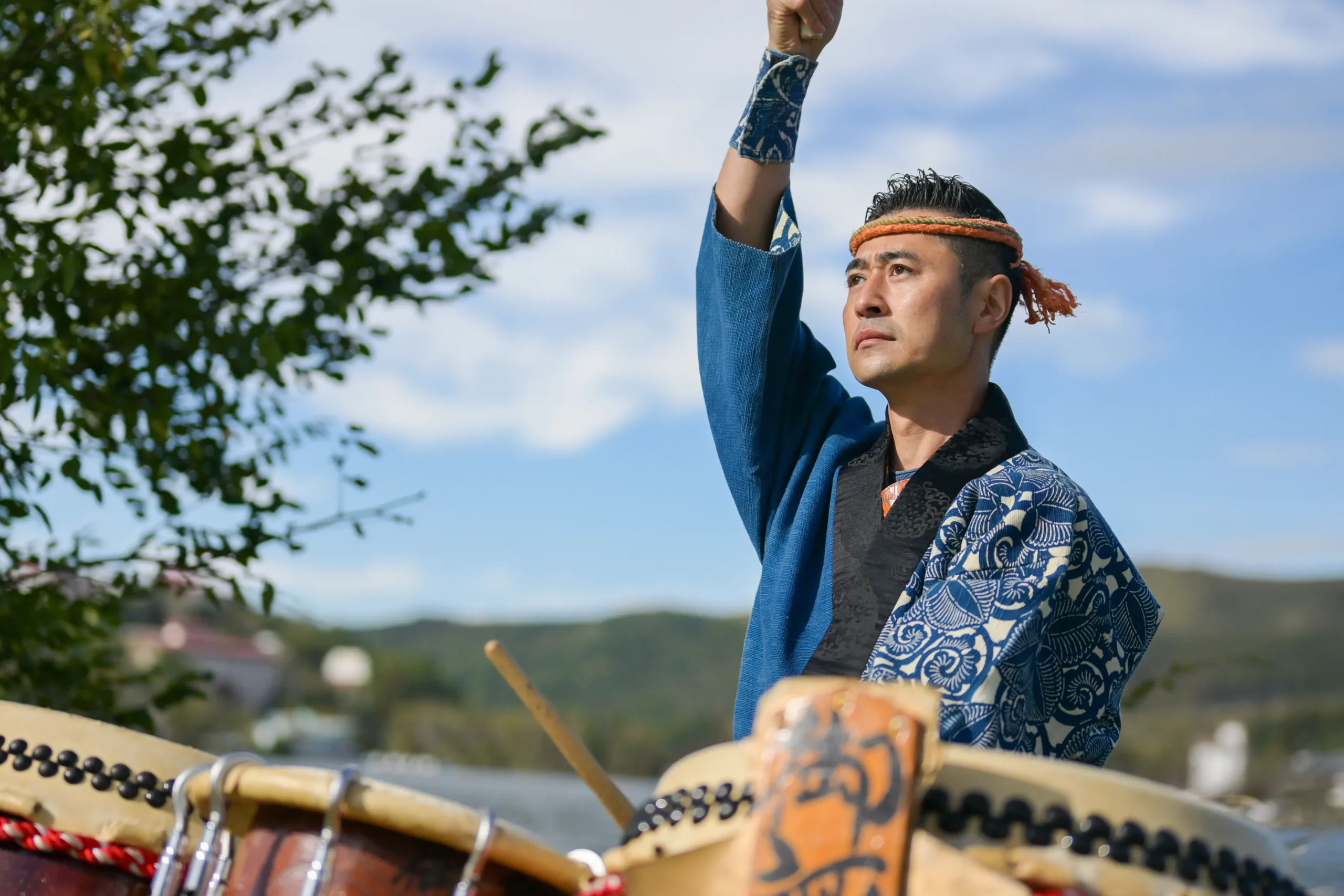
The Resounding Echo: Harmonizing with the “Heartbeat.”Passing Down the Osuwa Daiko Drumming from Grandfather to the Next Generation.

山本 麻琴
Makoto Yamamoto
Chino [Nagano]
Makoto Yamamoto
Born into the head family of Osuwa Daiko in Okaya City, Nagano Prefecture, in 1981, he started playing the drum at the age of two under the tutelage of his grandfather and parents, who were also performers and instructors. He is currently dedicated to the performance, instruction, and production of Osuwa Daiko, striving to promote its popularity.
Osuwa Daiko, a drumming tradition from the Suwa region in Nagano Prefecture, Japan, was initially a means of dedication by farmers and a way to inspire the masses during battles. This cultural practice, which nearly faded away, was revived by Oguchi Daihachi, the head of the family lineage. Today, it is esteemed both domestically and internationally.
Carrying on this legacy as both a performer and instructor is Yamamoto Makoto, Oguchi Daihachi's grandson. Mr. Yamamoto explains, "Playing the drum is an activity that directly connects to life and existence." We spoke to Mr. Yamamoto about inheriting and perpetuating the culture of Osuwa Daiko for future generations.
A Childhood Surrounded by Taiko, Unwavering Devotion Despite Distance.
“From the time I was in my mother’s womb, I was listening to the sound of drums, and I actually started learning at the age of two. Drums have always been a part of my life from the very beginning.”
That’s how Yamamoto Makoto describes his childhood. Born into a prestigious family of Osuwa Daiko, his grandfather Oguchi Daihachi was the family head, and his father was a performer and instructor. However, as a child, he went through a period where he couldn’t face Osuwa Daiko directly.
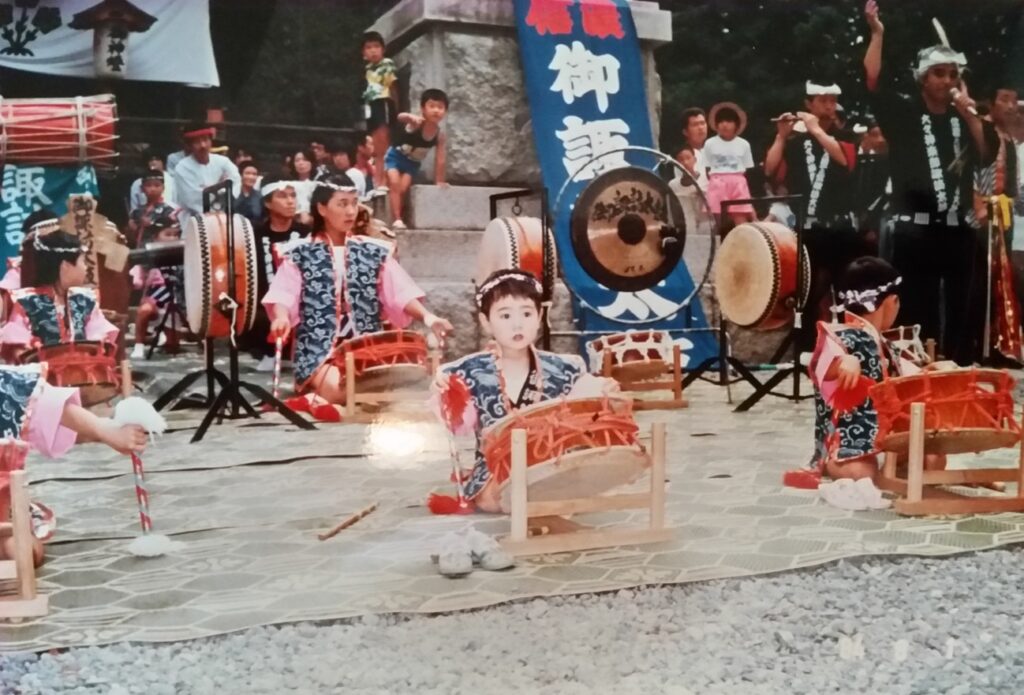
“Every day, including weekends, was filled with drum instruction and performances. Drums were always present in our home. However, as I grew older, I realized that a life revolving around Taiko wasn’t typical, which made me envy my peers. Gradually, the predetermined path before me became less appealing, and I aspired to pursue a different career from my parents, even considering becoming a salaried worker.”
After graduating from high school in Okaya, he chose to study metalworking. He studied for two years at a vocational school in Tokyo and then worked at an accessory shop in Matsumoto. However, he never fully separated himself from theた world of Taiko.
“In Suwa, there are dedications twice a year, in January and August. My father said, ‘You must never miss the dedication,’ so from my first dedication in August when I was three years old, I always played the taiko only twice a year, even when I was attending vocational school and working in Matsumoto.”
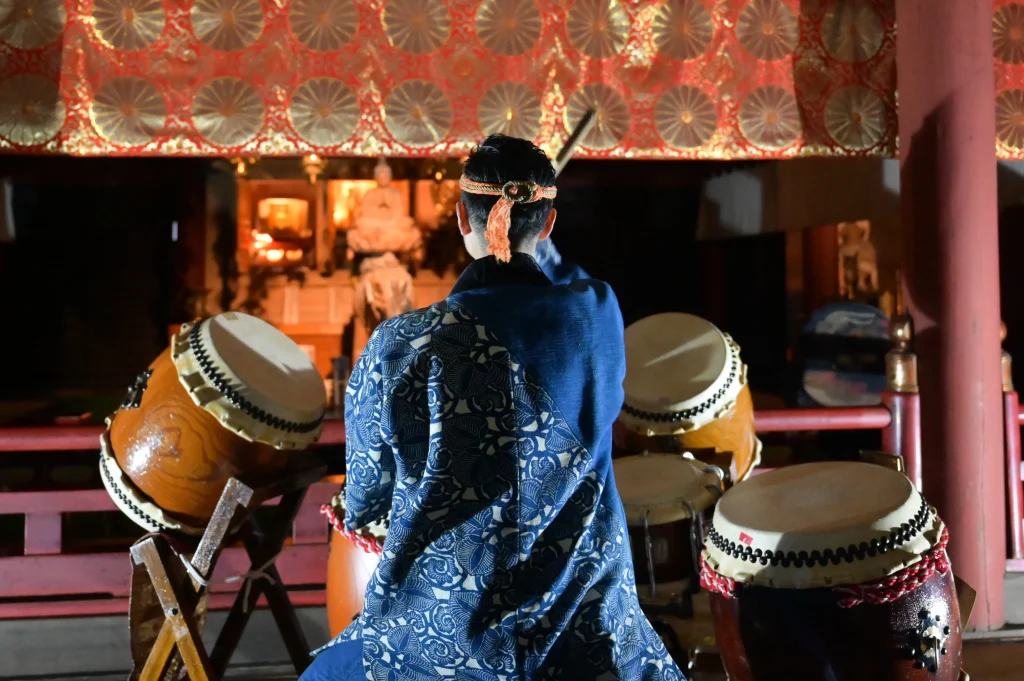
A significant turning point in Mr. Yamamoto’s life occurred when his father, also a Taiko instructor, passed away due to illness.
“My father was deeply committed to the heritage of Osuwa Daiko and had high hopes for me as his successor. This pressure led me to dream of a different career. However, his passing freed me to consider my future from a new perspective.”
Faced with the decision to continue in metalworking or to inherit the legacy of Osuwa Daiko, Mr. Yamamoto embarked on a journey of self-discovery.
“Though limited to biannual dedications, the drum was always in my thoughts. I decided to approach the drum with a mindset of ‘I am doing this’ instead of ‘I have to do this.’ I gave myself a year to seriously commit and decide whether to make Taiko my life’s work.”
His activities soon centered around drumming and teaching. A few months after his decision, he organized a three-generation performance featuring himself, his grandfather, and his mother, which was a great success.
“I could express my vision on stage through the selection of performers, arrangement of songs, and collaboration with other instruments.”
Unfortunately, his grandfather passed away in a traffic accident shortly thereafter.
“The incident occurred before the year had ended. However, by then, the option to leave Taiko was no longer viable for me. Aware of my role as the successor, I resolved to continue teaching and performing, sharing what I had learned and mastered in my own way.”
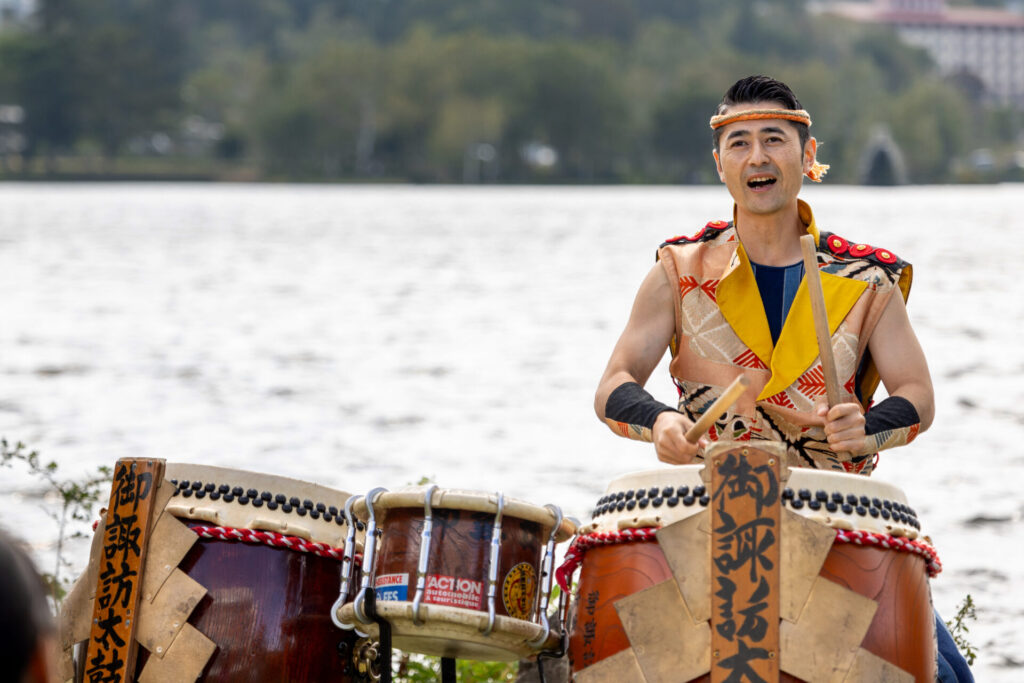
In the years following, Mr. Yamamoto dedicated himself to perpetuating the tradition of Osuwa Daiko. He nurtured many disciples and appeared in movies and dramas, actively participating in international performances. More than 15 years after he stood at the crossroads of whether to continue the tradition, Mr. Yamamoto is now at the forefront of Osuwa Daiko.
Unchanging Dedication to the Gods of Suwa, Regardless of the Performance Venue.
What is the culture of Osuwa Daiko that Mr. Yamamoto has committed to continuing?
“Osuwa Daiko originated from Suwa farmers communicating their prayers for rain, pest control, and good harvest to the gods of Suwa Grand Shrine through the sound of drums. In the Warring States period(1467-1615), farmers played drums on battlefields to inspire their allies and change formations through the sound. Osuwa Daiko is sacred music, music of inspiration, and military music… I believe it is essential to convey this background.”
One distinctive feature of Osuwa Daiko is the straight arm raising and baton-pointing motions included in the performance, symbolizing reverence for the gods of Suwa.
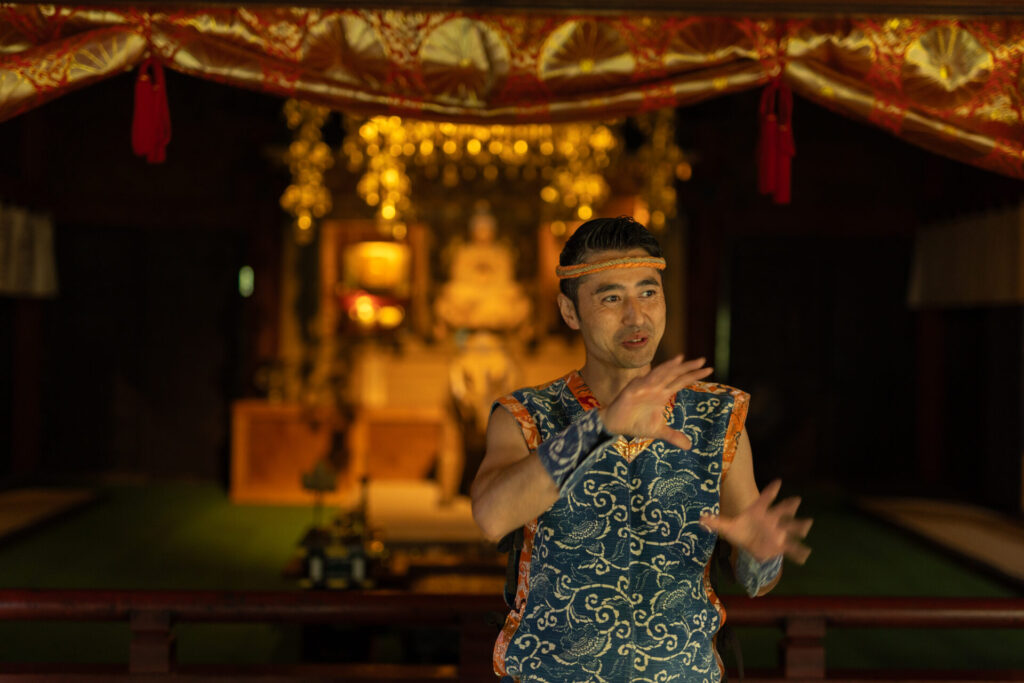
“Raising hands straight up symbolizes playing the drums of heaven. There’s a saying in drum instruction, ‘Tentsuku Chitsuku Tetenga Taihei,’ which means that ‘Tentsuku’ beats the heavenly drums and ‘Chitsuku’ beats the earthly drums, meaning that by beating the heavenly and earthly drums, the whole world will become peaceful and we can live in peace.”
Mr. Yamamoto is invited to perform both domestically and internationally, always maintaining the dedication to Suwa Grand Shrine regardless of the performance location.
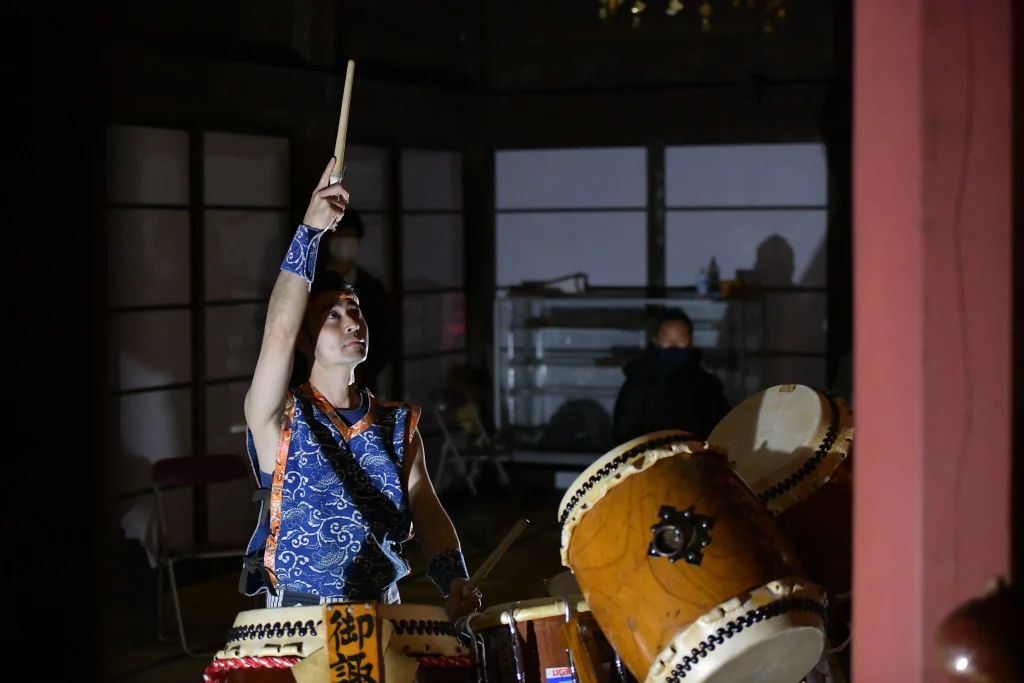
Another unique aspect of Osuwa Daiko is its orchestra-style ensemble drumming.
“This style, where multiple people play a variety of drums, is now common nationwide, but it originated with Osuwa Daiko. After returning from Manchuria post-war, my grandfather Oguchi Daihachi started a band to uplift the spirits of disheartened people. He played the drums in the band, which became quite famous. During this time, a relative suggested that if he could play the drum set, he might also play Japanese drums. The relative brought drum scores from the Suwa region that had been discontinued. Intrigued by the idea of reviving them, my grandfather began the restoration work out of curiosity.”
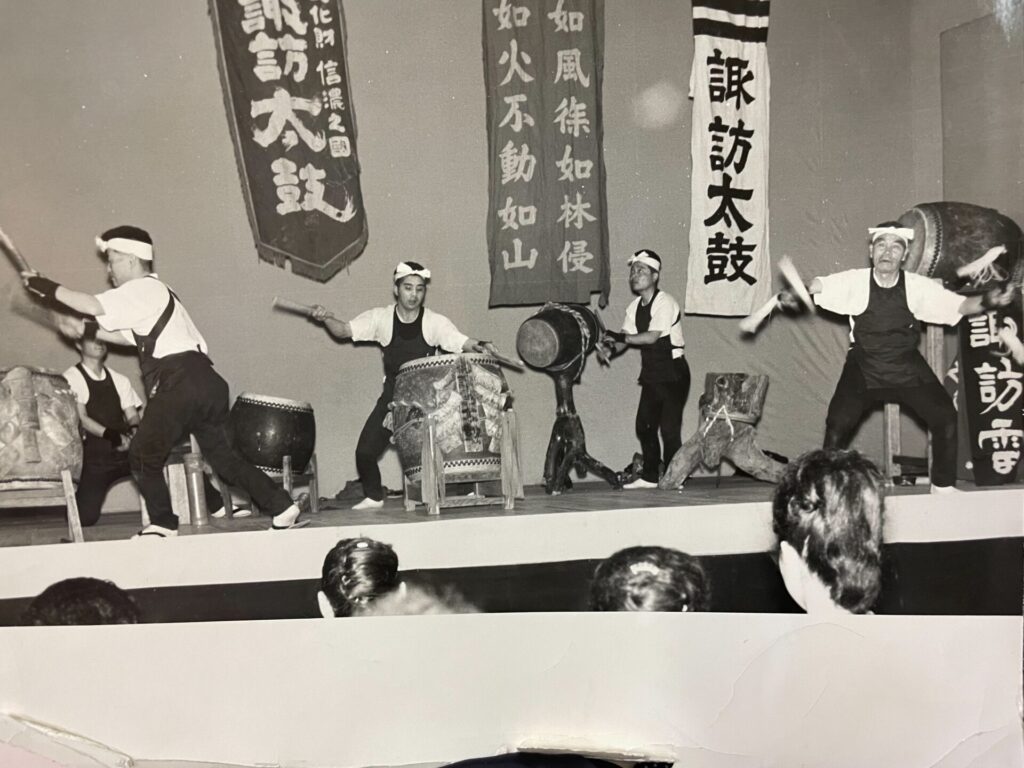
However, the restoration process was not simple. The ancient scores only contained circles and dots, and verbal transmission from a master was essential for interpretation.
“Oguchi Daihachi expanded his search beyond Suwa to the entire Nagano Prefecture, seeking people knowledgeable about Osuwa Daiko. Even after finding a priest, understanding the rhythm and tempo was challenging. My grandfather incorporated his experience with jazz and tango into the restoration process.
At the time, the variety of drums held by performers was diverse. However, this assortment of drums created a range of sounds. By leveraging these individual characteristics, he sought to express a single piece of music through the drums alone. This approach culminated in the unique ‘orchestra-style ensemble drumming’ of Osuwa Daiko.”
Making Osuwa Daiko as Accessible as Local Cuisine
The drum festival initiated by Mr. Yamamoto’s grandfather in Suwa has reached its 54th year in 2023. However, due to the pandemic, the number of Osuwa Daiko drummers has decreased to about 15. Mr. Yamamoto shared his thoughts on the succession of Osuwa Daiko.

“The door to Osuwa Daiko is always open, but unfortunately, even locals haven’t all had the opportunity to play or see the drums. Like local cuisine, whether people come to love it or not, I want to increase opportunities to hear and play the drums, so everyone has at least once experienced it in their childhood.”
As the threshold to participate rises, the culture may become rare and potentially extinct. Mr. Yamamoto believes that providing opportunities for people to listen to Taiko, even those with no particular interest, can enhance its value. He performs in unusual settings like lakesides and museums, making Taiko more accessible.
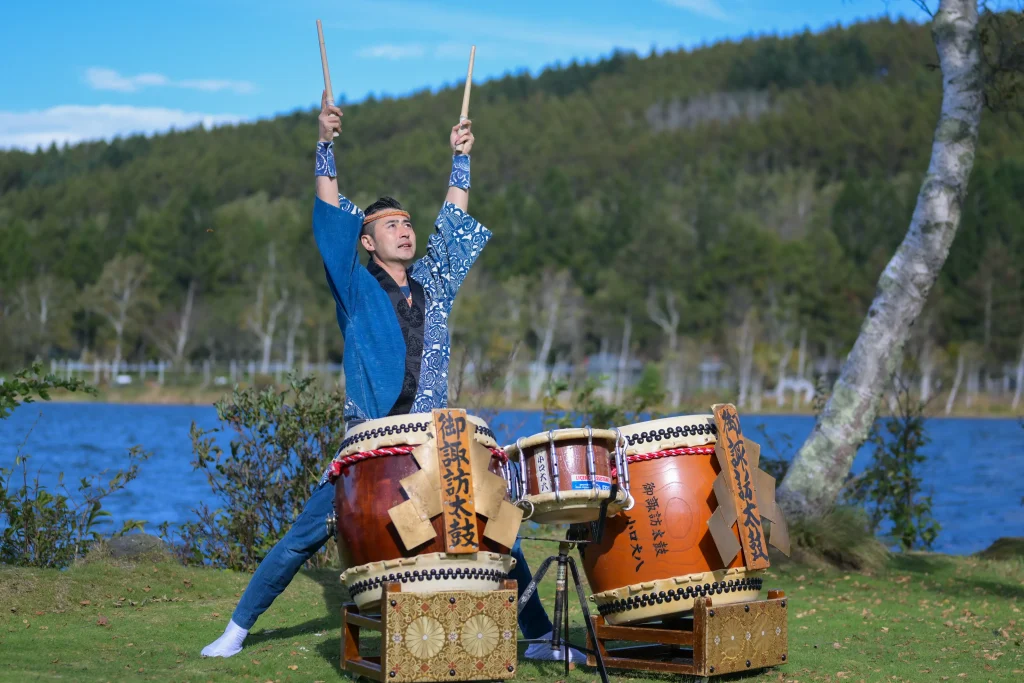
Finally, Mr. Yamamoto shared the allure of the drum.
“Each of us has our own ‘drum’ from birth, our heart. As it’s often said, the ‘heartbeat’ continues as long as we live, quickening with excitement and slowing with sleep. Thus, when we hear the sound of the drum, it resonates with our own ‘drum,’ our heart.”
Currently, Mr. Yamamoto is not only involved in ‘listening’ but also actively provides opportunities to ‘play’ the drums, asserting that drumming directly connects to ‘life’ and ‘existence.’
“Babies naturally start hitting tables once they can move, making sounds by striking objects. In primitive times, drums were used to signal love, meal times, or enemy attacks. The act of drumming is instinctual, and conveying it far and wide is an ancient human practice. Anyone can play the drum if they can hold the sticks. It’s refreshing for anyone, so I encourage everyone to try it. Especially near Lake Shirakaba, where the mountains echo the drum beats, creating an ideal environment. It brings us back to our origins, reminding us of our humanity and our place in the natural world.”
Finally, I asked Mr. Yamamoto about what he aims to achieve in the future.”Even if it’s just the feeling of ‘drumming feels good,’ that’s a great start. By creating opportunities to encounter the drum and continuing to convey the identity of Osuwa Daiko, as the farmers dedicated it to the gods and inspired people in battles, I hope to preserve this tradition.”
